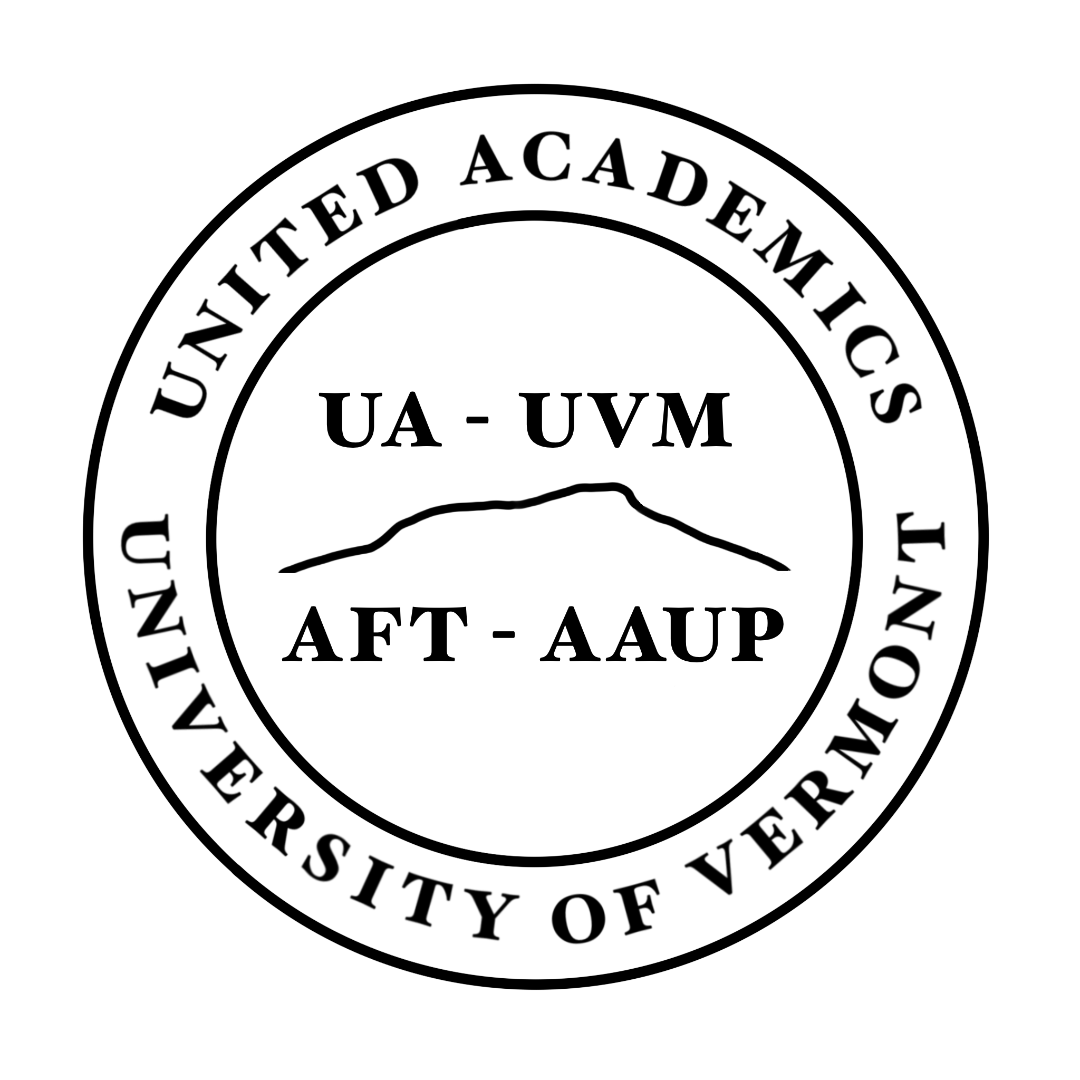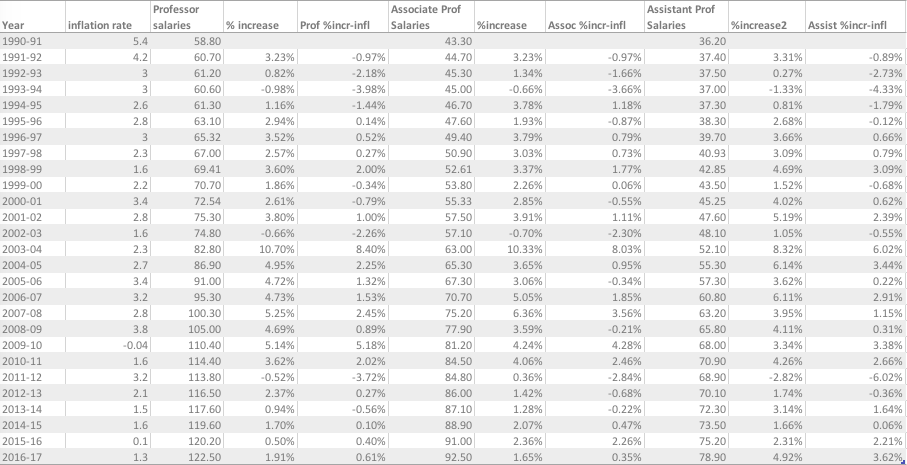Salaries at UVM before and after unionization: the long view
Faculty do not become academics to get rich. But salaries matter to individuals and to the institution; competitive salaries are necessary to hire and retain scholars, to maintain morale, and to maintain prestige. Collective bargaining is shown systematically to result in higher wages and better benefits across industries, and comparisons of UVM pre- and post-union bear this finding out.
But by how much? Annual raises specified in the contract are not the only thing shaping salaries. Raises accumulate. A raise one year becomes part of one’s base salary, upon which further raises are based; good raises early in a faculty member’s career typically shape their salary positively for the rest of their lives. This is why contractually guaranteed promotion bumps (between 6% and 11% depending on rank), and sometimes minimums, often have a bigger effect on a faculty member’s lifelong earnings than variations in annual across-the-board and promotion raises.
So one needs to look beyond contractual raises and at long term trends to get the complete picture. The most complete data on academic salaries comes from the AAUP Annual Salary Survey, which gathers information each year on average salaries by rank at almost all colleges and universities across the country. Here we use this data to measure actual changes in average salary at UVM by rank (details in the table below), and apply it to “waterfall” graphs to provide a better visual sense of the effect of bargained raises at UVM over time. These waterfall graphs show changes in average salary as reported by AAUP, adjusted for inflation, before and after the union, for assistant, associate, and full professors. (Lecturers were not recorded in the AAUP data until the mid-2000s).
The story is clear: in 1990-91, UVM was still riding high in the wake of the original 1985 Public Ivies book by Richard Moll, which gave UVM a serious boost in national prestige. Raises declined thereafter, as UVM dropped in national rankings.
That pre-union 1990s decade at UVM was marked by what some administrators then called “a cycle of decline,” where lagging salaries, morale, and enrollments reinforced each other and created a climate where many faculty were motivated to leave.[*]
During that decade, administrators promised year after year to do something about low salaries. The administration’s failures to deliver had everything to do with the creation of United Academics, and while many factors lead to UVM’s revival, the correlation of the first contracts with the turnaround is unambiguous.
Another useful (and more traditional) lens is comparing UVM salaries to averages nationwide as measured by AAUP. Until 2015, AAUP ranked universities within category by “quintiles,” where 5 is the bottom 20%, 3 is the middle 20%, 1 is the top 20%, and so on. (UVM is compared to what AAUP calls Category 1 research universities.) As you can see in the table here, in 1990, UVM Professors and Associates were listed as 3s, in the mid-range of public universities, and Assistants as 4. As the decade progressed, UVM’s salaries increasingly lagged compared to the national market, bottoming out between 2000 and 2002, when all ranks were in the 5th, lowest, quintile. When the first union contract came into force in Feb. 2003, the effect was clear: salaries gradually rose until 2010-11, when UVM finally returned to its early 1990s status as in the middle quintiles in some or all ranks, which is where we have remained since.
Change in AAUP reported average UVM salaries by rank, 1990-2016


